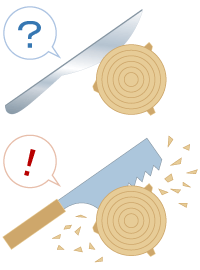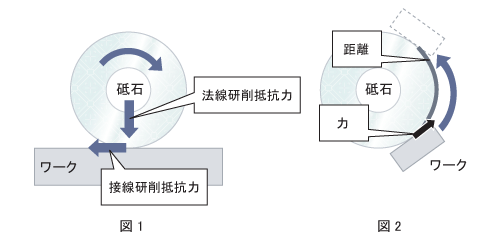You may be wasting energy with your cutting tools.
Why knives cannot cut a tree.
When cutting an object with a flat blade knife, the energy spreads out meaning you need a greater power. On the contrary, when using a toothed saw blade, the energy concentrates on one point, and adding high speed reciprocating action to this, cuts off the material easily.
This fact is generally known, however no one attempted to apply this for practical use. This is one of the discoveries used in our tools, and with many other innovative ideas we have developed new technologies.
Knife transforms energy into heat, while saw efficiently uses energy to cut materials. In order to achieve high-performance with least energy, it is essential to use this theory when you set the cutting depth or feed rate, which is specific grinding energy.
Many equipment manufacturers set these rates according to their experience and intuition. Experiences are useful when dealing with existing materials. However, needs for processing new materials are increasing, and estimating based on this theory is essential.
NanoTEM provides tools that are most suitable for processing wide range of materials based on this theory.


